Related Research Articles

The Galápagos land iguanas comprise the genus Conolophus of the Galápagos Islands (Ecuador). The number of species of this variable genus has always been disputed; the most current taxonomic surveys suggest that three species exist:

The Domus Sanctae Marthae is a building adjacent to St. Peter's Basilica in Vatican City. Completed in 1996, during the pontificate of Pope John Paul II, it is named after Martha of Bethany, who was a sibling to Mary and Lazarus of Bethany. The building functions as a guest house for clergy having business with the Holy See, and as the temporary residence of members of the College of Cardinals while participating in a papal conclave to elect a new pope.

The papal apartments is the non-official designation for the collection of apartments, which are private, state, and religious, that wrap around a courtyard on two sides of the third (top) floor of the Apostolic Palace in Vatican City.
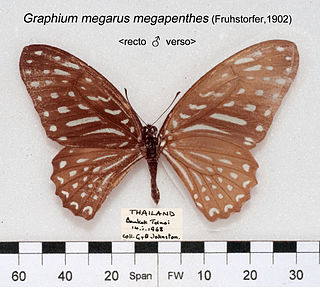
Graphium megarus, the spotted zebra, is a species of swallowtail butterfly found in Southeast Asia. It is common and not considered to be threatened; however, the nominate subspecies is protected by law in India.
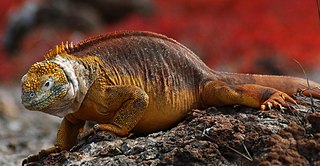
The Galápagos land iguana is a very large species of lizard in the family Iguanidae. It is one of three species of the genus Conolophus. It is endemic to the Galápagos Islands, in the dry lowlands of the islands of Fernandina, Isabela, Santa Cruz, North Seymour, Baltra, and South Plaza.

The fifth cholera pandemic (1881–1896) was the fifth major international outbreak of cholera in the 19th century. It spread throughout Asia and Africa, and reached parts of France, Germany, Russia, and South America. It claimed 200,000 lives in Russia between 1893 and 1894; and 90,000 in Japan between 1887 and 1889. The 1892 outbreak in Hamburg, Germany was the biggest European outbreak; about 8,600 people died in that city. Although many residents held the city government responsible for the virulence of the epidemic, it continued with practices largely unchanged. This was the last serious European cholera outbreak of the century.
This is an index of Vatican City–related topics.

Conolophus marthae, the Galápagos pink land iguana, is a species of lizard of the family Iguanidae. This critically endangered iguana is native only to the Wolf Volcano in northern Isabela Island of the Galápagos Islands (Ecuador). It has a pink body with some dark stripes, prompting some to call it the pink iguana or the Galápagos rosy iguana. The species was first discovered in 1986 and was identified as a separate species, distinct from the Galápagos land iguana, early in 2009. This species is the only example of ancient diversification in the genus Conolophus.
Louis D. Astorino is an architect in Pittsburgh, Pennsylvania and the first American architect to design a building in the Vatican.
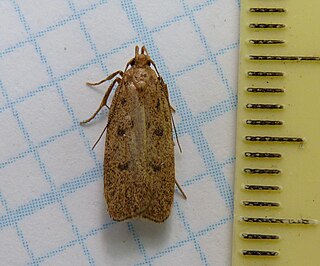
The Symmocinae are a subfamily of moths in the superfamily Gelechioidea. These small moths are found mainly in the Palearctic and Africa.
Symmocoides is a genus of moths in the family Autostichidae.
Symmocoides don is a moth of the family Autostichidae. It is found in Spain and Portugal.
Symmocoides ferreirae is a moth of the family Autostichidae. It is found in Spain. Its type locality is Piedrabuena, Ciudad Real.
Symmocoides gozmanyi is a moth of the family Autostichidae. It is found in Portugal.
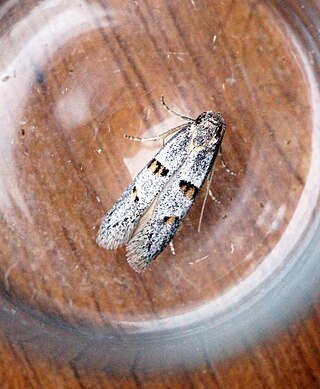
Symmocoides oxybiella is a moth of the family Autostichidae. It is found in France, Italy, Spain and Portugal.

Prionopelta is a genus of ants in the subfamily Amblyoponinae. Of its 15 species, four are known from Africa, five from the Americas and six from the Indo-Pacific region.
Pholiota marthae is a species of agaric fungus in the family Strophariaceae. Found in Argentina, it was described as new to science by mycologist Rolf Singer in 1969.
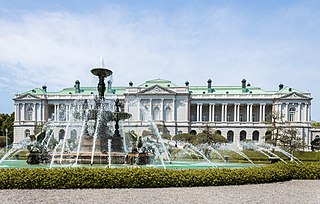
A state guest house is a building owned by the government of a country which is used as an official residence for visiting foreign dignitaries, especially during state visits or for other important events.
Homonota marthae is a species of gecko. This newly described species is only known from Paraguay. The specific name marthae honors Martha Motte, a Paraguayan herpetologist.
Atractus marthae is a species of snake in the family Colubridae. The species can be found in Colombia.